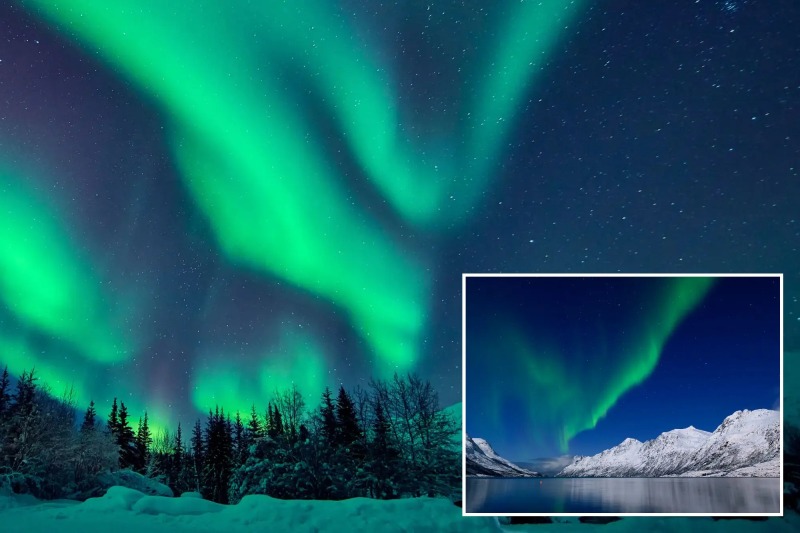The most powerful solar flare to affect sections of the planet in six years occurred a few days ago, but the NOAA Space Weather Prediction Center is now alerting people to the possibility of more geomagnetic impacts, including the possibility of seeing the Northern Lights.
For at least Sunday, December 17, the agency has issued a Geomagnetic Storm Watch due to heightened solar activity.
Multiple coronal mass ejections (CMEs) from the Sun have been witnessed by experts, sending plasma particles hurtling toward Earth.
In an update on Friday, NOAA stated that “multiple CMEs from 14 and 15 Dec are likely to cause G1-G2 (Minor-Moderate) geomagnetic storm conditions on 16–17 Dec.”
According to the agency’s first estimates, the event might register as a six on the Kp index, which goes from 0 to 9.
Such incidents in the past have produced dancing hues that have been seen from Seattle to Minneapolis and Buffalo, New York, including green, red, and even purple.
It is well known that clouds and light pollution can obstruct views and narrow the range of locations from which auroras can be seen.
Communities further south may be able to witness the northern lights if the event is undervalued. The light show would be seen in areas like Chicago, Detroit, Green Bay, and Des Moines, Iowa, if there was a more substantial solar event.
The geomagnetic storm can affect power grids, spacecraft, and communication equipment in addition to causing auroras.
According to NOAA, during a long-duration incident, radio signals may diminish and electric transformer damage may occur.
According to NOAA’s 5-point geomagnetic activity scale, the event was predicted to reach a level of G2 at the time of the previous report.
When an event achieves a G2 level, it is regarded as moderate; however, when it reaches a G3 level, it is regarded as strong and has wider effects.
As Solar Cycle 25, which is predicted to peak in 2024, solar activity, including coronal mass ejections and solar flares, has been increasing.
Every eleven years, the Sun’s magnetic field reverses during a period known as a solar cycle. If forecasts are correct, Solar Cycle 25 might last until 2030, having started in 2019.


